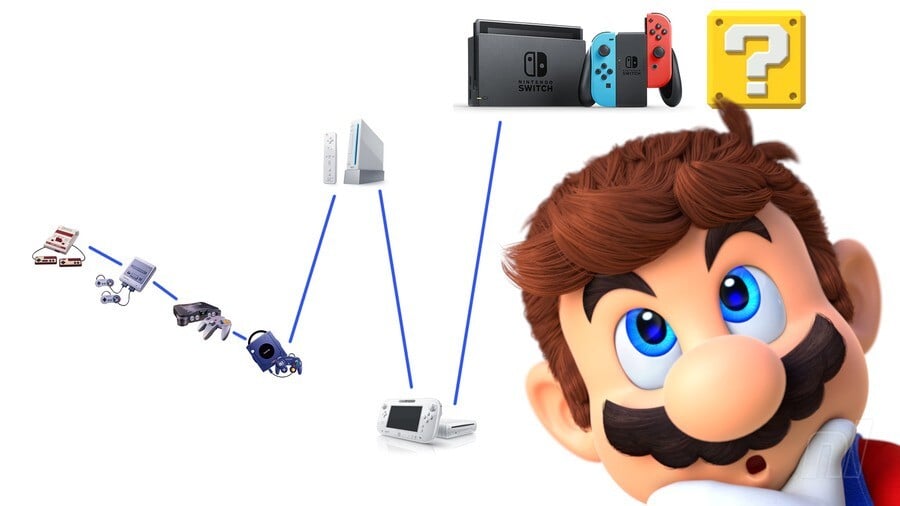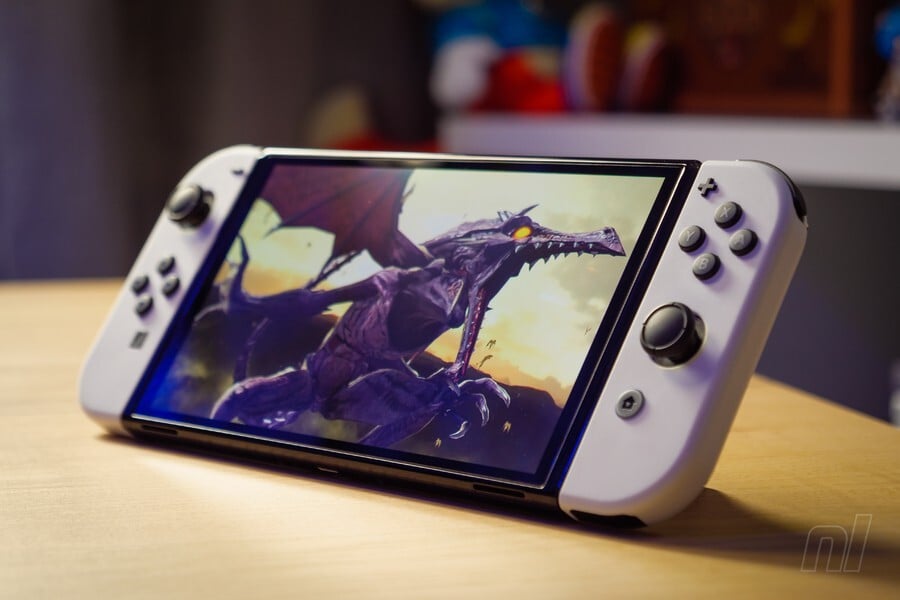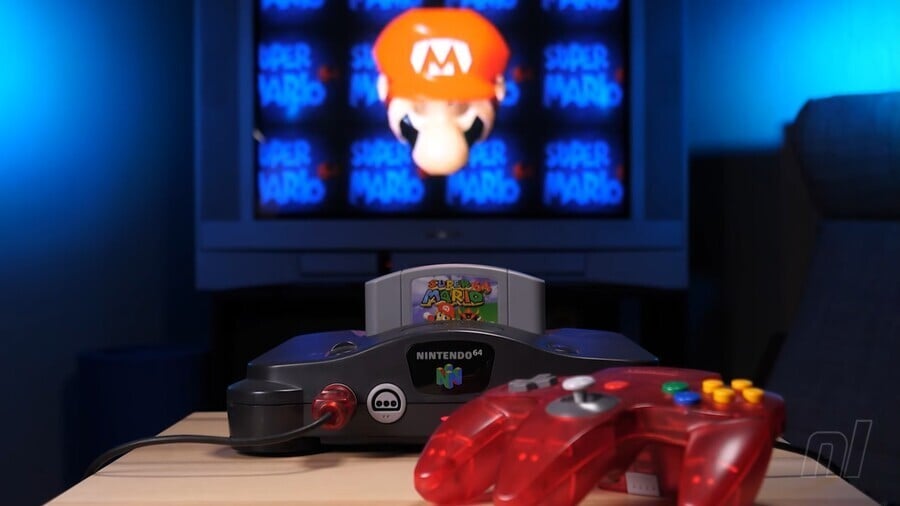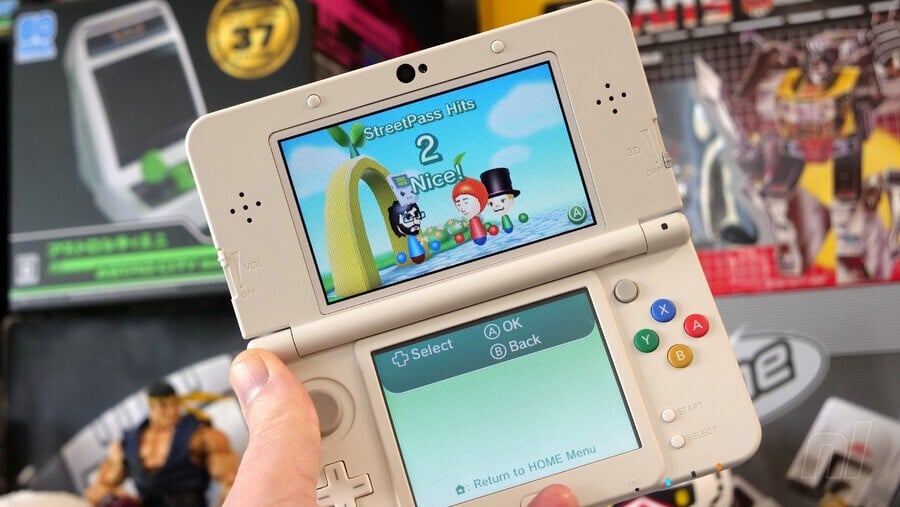Soapbox features enable our individual writers and contributors to voice their opinions on hot topics and random stuff they’ve been chewing over. Today, Gavin ponders what ‘success’ looks like for systems with impossibly popular predecessors…
Looking back at Nintendo’s home console hardware sales over the past four decades, the line plotted by lifetime figures for each system shows a steady decline for the first two decades before a couple of huge electrocardiogram-style peaks bringing us to today.
A strong start with 61.91 million Famicom/NES units sold was followed by a not-to-be-sniffed-at 49.1 million Super Famicoms/Nintendos. The N64’s 32.93 million and GameCube’s 21.74 million aren’t exactly bad, but the need to shake things up was clear. Wii did just that in spectacular fashion, with 101.63 million units to its name. Then came a dramatic dive with the Wii U (13.56 million) before Switch brought things back to life with 141.32 million systems sold – and counting.
The handheld line is a little less dramatic, with two peaks followed by declines: 118.69m (Game Boy + Color) to 81.51m (GBA), then up to 154.02m (DS) before sliding to 75.94m (3DS). The large ‘families’ of systems under those umbrellas muddies the waters somewhat, and with Switch folding the handheld and home console sales into one, the future is harder to predict than ever before. Handheld-wise, based on past trends, we’re due a spike, but only the DS’ sales have surpassed Switch (at the time of writing) and it’s easy to imagine that Nintendo has nowhere to go but down with ‘Switch 2’.

Which would be fine. Given the investor jargon and financial focus that’s crept into fandom over the last couple of decades, it’s easy to conflate numbers being ‘down’ with numbers being ‘bad’. Selling nearly 50 million Super Nintendos is not ‘bad’ by any reasonable metric, even if that’s over 10 million fewer than its predecessor. The Nintendo 64 essentially birthed modern 3D console gaming, yet ‘lost’ to PlayStation. 3DS is one of Nintendo’s finest-ever consoles — a stellar machine with an unimpeachable library. That it sold less than half the units of its predecessor does not make it a failure.
Nintendo is at its best when it’s doing something different
However, as fans, we’ve all become accustomed to a growth-focused, competitive mindset of moar these days. It’s the kind of rubbish that fuels console wars. It has film fans eyeing a franchise’s box office takings, monitoring the opening weekend numbers and the second-week drop-off, and awaiting executive word that, yes, ticket sales were in line or above expectations and a sequel has been greenlit – and the exhausting cycle starts again. Marketing speak has fully crossed over into fan circles, encouraging the use of words like ‘content’ and ‘activations’, as if that’s a normal way to talk. The onus is put on consumers to engage and make noise; we’re thanked effusively by creators when a TV series is recommissioned (“We couldn’t have done it without you, the fans!”), which tacitly puts the blame on us when a good show gets canned. It’s not the showrunners’ fault, either — they’re as stuck in this feedback loop as the rest of us who aren’t running the studio.
It’s this complicated, reciprocal mess from which Nintendo continually, carefully extricates itself. Sometimes it makes the company’s decisions appear wacky or counterproductive when there’s a seemingly common-sense, no-brainer course of action. Just make DLC boards for Mario Party! Just remake A Link to the Past in the Link’s Awakening engine! Just make another Switch!

As frustrating as it can be, it’s also this rejection of received wisdom and refusal to engage in cyclical discourse which enables Nintendo to genuinely surprise you. You don’t hear excuses on its social channels. You don’t see fawning odes to the passionate, burning fandom that has fueled its hardcore following for generations. (“This is Miyamoto. We hear you.”) Indeed, its attitude to fan communities can feel coldly corporate — or actively hostile when the DMCAs start flying — but Nintendo is famously in the game of surprising and delighting and you don’t do that through constant communication and empowering only the most vocal members of the fanbase to the point of entitlement.
Which brings us to the “Switch successor” and the tension between the innovation in Nintendo’s DNA and giving people what they want. Following Switch’s staggering success, we all want more of the same. Just, you know, better. 4K, faster, with bigger better third-party ports, and all backward compatible with our existing library. I’m betting on a system which maintains the fundamentals of the current console while adding something to distract from what will be essentially the same handheld-hybrid concept.
Nintendo has done this before, of course. Think 3DS and its optional (and underrated) autostereoscopic gimmick. In fact, StreetPass was arguably the main differentiator there, a social innovation which couldn’t be more Nintendo-like but was wrapped up in a very familiar package. After seven years of such life-changing convenience, it feels unimaginable that a new Nintendo system wouldn’t be a handheld that can dock to a television.

But is that a lack of imagination on my part? Perhaps. Maybe there’s a better way that the boffins in Kyoto have developed to deliver us the finest video games: a doughnut with a pulse sensor in the middle; a holographic box with touchscreen walls; a tube that unfurls into a playpad with a screen. If Nintendo went totally off-piste with Switch 2 and the result wasn’t a Wii-like sales sensation, the obvious conclusion would be that abandoning the tried-and-true Switch formula was a mistake. Then again, a Wii-like 100-million-selling smash would constitute underperformance compared to Switch.
3DS is a stellar machine with an unimpeachable library. That it sold less than half the units of its predecessor does not make it a failure.
Don’t get me wrong, I absolutely want an iterative Switch successor as much as anybody. But I also love weird Nintendo, the company that puts out pedometers and motion-sensing pilates hoops and cardboard robot suits with rubber bands. I’m really hoping Switch 2 will have some of that off-the-wall magic which defines the company’s most imaginative offerings – something more than ‘just’ another Switch. But also another Switch.
As we’ve seen, a system can be wildly successful without reinventing the wheel. Nintendo’s done it in the past. Heck, look at Sony and its five PlayStations. There doesn’t need to be a Wii or DS-style foundational reimagination of the hardware to deliver surprise and, indeed, delight. There’s also the fact that augmenting a small, portable console with new ideas and novel peripherals is easier than with a hulking great box under the telly.
However, joke as we might about umpteen Mario Parties, all of the Wii U double-dips, and how the same IP well is returned to time and again, Nintendo is at its best when it’s doing something different. If Switch 2 is an iterative overhaul of the current console as most of us hope it will be, it’s unlikely to appeal to a fresh blue ocean of players. Even with its enviable, inimitable first-party games, in pure sales terms, all signs point to diminishing returns in the coming generation.

Which, again, is fine! Switch doesn’t have to beat PS2 in the all-time hardware sales charts. ‘Switch 2’ doesn’t have to outsell its predecessor. If it can deliver unique experiences that move us in the same way the 3DS managed, that’ll be more than enough to qualify as an emphatic success.
Even if it only sells a measly 75 mil.

Laura Adams is a tech enthusiast residing in the UK. Her articles cover the latest technological innovations, from AI to consumer gadgets, providing readers with a glimpse into the future of technology.







